New Higher Efficiency 3-5 Ton Models with Two Stages of Cooling Rheem®, a leading global manufacturer of HVACR and water heating products, announced the expansion of its commercial product offering with a higher efficiency extension to the well-received Renaissance™ Line. The packaged rooftop G/E and A/C lineup now includes 3-5-ton models with two stages of cooling and are Read more
HVACR
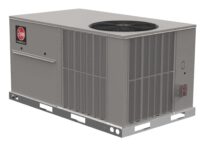
New Higher Efficiency 3-5 Ton Models with Two Stages of Cooling
Rheem®, a leading global manufacturer of HVACR and water heating products, announced the expansion of its commercial product offering with a higher efficiency extension to the well-received Renaissance™ Line. The packaged rooftop G/E and A/C lineup now includes 3-5-ton models with two stages of cooling and are purpose-built for commercial heating and cooling, delivering exceptional efficiency and value. The new models strike an ideal balance between intuitive design and cutting-edge technologies, meeting the high-performance demands of modern businesses.
Engineered for seamless replacements, Rheem Renaissance RACCYC and RGECYC units boast industry-standard footprints, common piping and electrical connections, field-convertible airflow, and minimized weight for unmatched ease of installation. With industry-leading serviceability and installability, the entire Renaissance line streamlines maintenance and installation, resulting in tangible time and cost savings. Time spent performing industry-standard service and preventative maintenance is reduced by up to 100 minutes compared to other commercial HVAC brands.
“With efficiency ratings up to 16.2 SEER2 and 12 EER2, this extension delivers better performance and is a great fit for a variety of commercial applications, especially K-12 school buildings,” said Laura Meyerrose, commercial product manager, Rheem. “Additionally, the availability of Rheem’s PlusOne® HumidiDry® hot gas reheat technology that can keep the desired room temperature while continuing to dehumidify in single-phase power models can lead to cost savings while increasing occupant comfort for businesses and separates Rheem from competitors.”

Key features of the Renaissance 3-5 ton two-stage line extension include:
- PlusOne HumidiDry: HumidiDry hot gas reheat incorporates a variable frequency drive (VFD) that operates at a lower speed on the first-stage cooling, saving energy, enhancing performance, and increasing occupant comfort.
- PlusOne ServiceSmart™: Built-in features designed with feedback from HVAC field professionals to improve serviceability and provide easy access to unit components.
- Qwik-change flex-fit rack capable of accommodating up to four-inch MERV 8 or MERV 13 filters, ensuring improved indoor air quality.
- Qwik-Slide Blower: This feature allows for extremely easy access and removal of the blower assembly for servicing internal components.
- Qwik-Clean Drain Pan: Composite material pan that slides out completely allows for effortless cleaning and includes a standard overflow sensor.
- PlusOne Velocifin™: A patented, complete redesign of the heat exchanger tubing that increases heat transfer through to deliver better efficiencies.
- Full MicroChannel Coils: Maximizes reliability while reducing overall refrigerant weight and improving serviceability, offering cost-saving advantages.
The Renaissance line extension is available now at local Rheem distributors nationwide. Rheem offers a one-year limited parts warranty, five-year compressor warranty, 10-year standard heat exchanger warranty, and an impressive 20-year stainless steel heat exchanger warranty (heat exchanger warranties apply to gas/electric models only). The units may even qualify for local rebates and incentives —helping business customers realize substantial savings for a greater return on their investment. And, these products are easily selected with RapidSpec.com, part of Rheem’s suite of easy, cloud-based tools to make specifying and creating submittal packages possible with just a few clicks.
For more information on the Renaissance line extension of higher efficiency products and how it can benefit commercial spaces, visit www.RheemCommercial.com.

This Is Part 1/2 of Building a Sustainable Future with Thermal Energy Networks by Marc Miller, Egg Geo, LLC Modern energy demands are growing, and the need for sustainable, efficient solutions to heat and cool our homes and businesses has never been greater. Enter Thermal Energy Networks (TENs)—innovative systems that distribute and reuse energy to Read more
This Is Part 1/2 of Building a Sustainable Future with Thermal Energy Networks by Marc Miller, Egg Geo, LLC
Modern energy demands are growing, and the need for sustainable, efficient solutions to heat and cool our homes and businesses has never been greater. Enter Thermal Energy Networks (TENs)—innovative systems that distribute and reuse energy to reduce costs, cut emissions, and optimize performance.
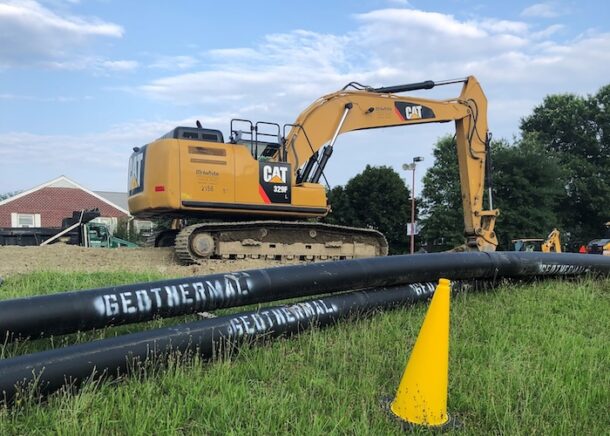
Image: Eversource
This article explores the basics of TENs, their benefits, and real-world applications, helping you understand their potential to transform energy systems for the better.
What Are Thermal Energy Networks?
At their core, TENs are district energy systems that use ambient temperature loops (ATLs) to share heating and cooling between buildings. These loops typically circulate a heat transfer fluid, such as water or a water-propylene glycol mixture, at a temperature range of 50°F to 85°F. By tapping into diverse thermal sources, such as geothermal wells, waste heat recovery, or natural water bodies, TENs provide sustainable, cost-effective alternatives to traditional heating and cooling systems.
Crucially, TENs optimize thermal sharing between stakeholders:
- Consumers exclusively use thermal energy.
- Prosumers both produce and consume energy (e.g., offices that generate heat and reuse it internally).
- Generators supply thermal energy into the network (e.g., geothermal wells or industrial processes).
How TENs Are Different?
Unlike traditional systems like two-pipe or four-pipe setups of district heating and cooling scenarios, TENs use an ambient one-pipe loop that operates at variable fluid flow and temperatures instead of relying on constant temperature and variable flows. Here’s what sets TENs apart:
- One-Pipe Systems manage heating and cooling directly by varying the flow of the fluid of varying temperature circulating the loop.
- Efficiency in Pumping reduces energy waste with self-balancing, simpler designs that eliminate the need for balancing valves. This results in significantly lower operating and installation costs.
- Pump Controlled Instead of Valve Controlled. No balance valves or control valves are used. Flow through decoupled secondary loops is managed by a pump sized to deliver the optimal flow.
Key Benefits of TENs
Energy Efficiency
TENs enable efficient thermal load sharing and shedding. For example:
- Unused heat from one building can be redistributed to another, maximizing energy use across the network.
- Water source heat pumps (WSHPs) leverage the stable temperature of ATLs, operating with coefficients of performance (COP) ratings of 3–5, which translate to lower energy consumption.
Cost Savings
Compared to traditional systems, TENs offer significant financial benefits:
- Lower Installation Costs: With single-pipe systems, there’s less piping, no balancing or control valves, and reduced labor for installation because of less fittings, less tooling and overall less pipe. Additionally there is a single pipe size for the entire loop.
- Reduced Operating Costs: Circulating water at ambient temperatures requires much less pumping power.
Scalability and Flexibility
TENs are highly scalable—there’s no limit to the number of stakeholders that can connect to an ATL. The caveat is that when sizing the loop, it must be sized for the total load to include anticipated future expansion. The more buildings added, the better the system operates due to improved thermal diversity, which counterbalances the temperature cascade effect (where fluid temperatures progressively change as they circulate).
Environmental Impact
Integrating geothermal energy with TENs significantly reduces greenhouse gas emissions. By shifting away from fossil-fuel-based heating systems, TENs pave the way for a green and sustainable future.
Real-World Example
The Eversource Geothermal Pilot in Framingham, Massachusetts, is a first-of-its-kind utility-scale networked geothermal project. Launched in 2024, this system connects 135 residential and commercial buildings, providing ground-sourced heating and cooling through an ambient temperature loop.
Key takeaways from this pilot include:
- Reduced reliance on fossil fuels, replaced with renewable energy from earth’s natural thermal stability.
- Positive feedback from participating stakeholders due to noticeably reduced energy costs and environmental impact.
- A replicable model for other communities to follow.
“This project… is enabling our team to see how we can provide services in a completely new way,” shared Bill Akley, President of Gas Distribution at the project’s groundbreaking.
Challenges and Considerations
No system is without challenges, but TENs offer practical solutions for common concerns.
- Temperature Cascade Effect: Concerns about progressive temperature changes are resolved by system diversity. More connected stakeholders create a smoothing effect that distributes thermal loads more evenly.
- Initial Investment: Modern legislative incentives and community grants, like those funded by the U.S. Department of Energy, are now making upfront costs more affordable for communities adopting TENs.
How TENs Function, a Simple Explanation
In the first illustration below, a TEN utilizing its one-pipe Ambient Temperature Loop (ATL). The TEN consists of a geothermal source/sink, an intermediary heat exchanger, a main loop distribution pump, and three stakeholders: a cooling-dominant data center, a heating-dominant industrial plant, and an apartment building with relatively balanced heating and cooling loads.
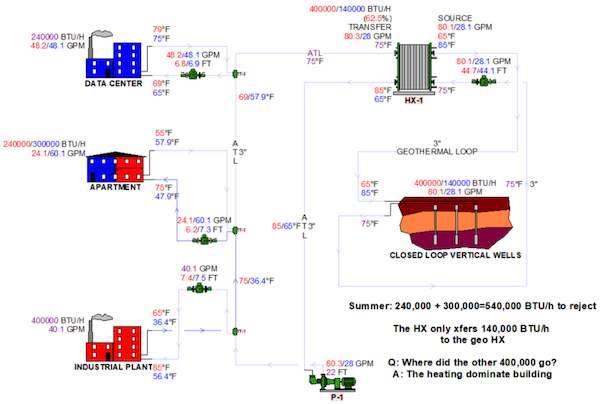
During the summer, the network manages a total heat rejection of 540,000 BTU/h from the apartment building and the data center. However, only 140,000 BTU/h is transferred to the geothermal sink via the heat exchanger (HX-1). This reduction occurs because the network redirects excess heat to the industrial plant, utilizing it for productive purposes rather than rejecting it to the ground.
In winter, the network requires a total of 640,000 BTU/h to meet the heating demands of the apartment building and the industrial plant. Of this, 400,000 BTU/h is supplied by the geothermal source through HX-1, while the remaining 240,000 BTU/h is provided by the data center, offsetting the geothermal demand. This demonstrates the network’s ability to efficiently balance loads by redistributing energy among stakeholders.
In the second example below, we introduce a cooling-dominant load of approximately 10 tons (120,000 BTU/h) to the loop. The system is designed to maintain a leaving heat exchanger temperature of 65°F and a return temperature of 75°F, preserving a 10°F delta T. This consistency is achieved through pump control. By increasing the pump speed and actively managing water flow through the heat exchanger based on temperature, the system sustains the desired 10°F delta T. foundational principles of a TEN.
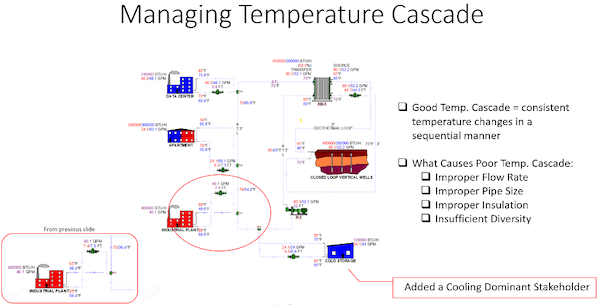
The performance of such a network improves with greater load diversity, i.e., the inclusion of more stakeholders with varying thermal profiles. Additionally, since the system is pump-controlled and does not rely on balancing valves the system is self-balancing. In fact, the temperature cascade effect is shown to improve with an increasing number of thermally diverse stakeholders connected to the loop.
In the previous scenario, the pump’s flow rate was 28 GPM. With the added load, it increases to 54 GPM. Additionally, the inlet temperature to the industrial plant rises from 56.4°F to 69.6°F. Even with the extra 10 tons of cooling load, the pipe size for both the geothermal source/sink loop and the ambient temperature loop remains 3 inches. Importantly, the return temperature to the heat exchanger remains consistent at a 10°F delta T with a 75℉-return design temp.
By examining the ambient temperature loop (ATL), we observe that the temperature range improves significantly, aligning with the target range of 55°F–85°F. Previously, when there were only three loads, the loop’s temperature immediately after the industrial plant was much lower at 36.4°F. Furthermore, the heat transfer through HX-1 and the geothermal well field increases substantially, from 140,000 BTU/h to 260,000 BTU/h, reflecting the additional 10 tons of cooling load.
It is worth noting that this theoretical scenario assumes no other consumers of waste heat, providing just a snapshot in time. In practice, there will always be various heat consumption requirements, such as domestic hot water production, pool heating, or snow melting. Thermal energy networks (TENs) are designed not only for heating and cooling but also for these additional purposes. As a result, the BTUs from cold storage will be utilized across multiple applications beyond simple heating or cooling thus keeping the amount of heat to be rejected by HX-1 to a minimum
This simplified explanation underscores the system’s ability to adapt to increased loads while maintaining efficiency and highlights the versatility of thermal energy networks in meeting diverse energy demands. In part 2 of this article, we will dive into the specifics of how to connect your home or building to the TEN with a decoupled secondary loop and talk about how to control the pump to account for Thermal Diversity and Temperature Cascade Effect.
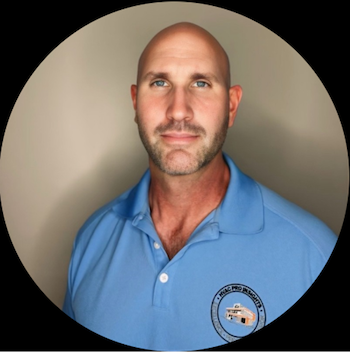 Marc Miller is a Mechanical Systems SME – Educator – Technical Writer – Author – Construction Management Consultant with Home – Egg Geo. He is presently the Lead Author on two textbook projects with Egg Geo. He may be reached at marcm@egggeo.com.
Marc Miller is a Mechanical Systems SME – Educator – Technical Writer – Author – Construction Management Consultant with Home – Egg Geo. He is presently the Lead Author on two textbook projects with Egg Geo. He may be reached at marcm@egggeo.com.

https://vimeo.com/1036092788 We are now the cream filling in the holiday Oreo cookie, as we got through Thanksgiving and we are all positioning ourselves for Christmas, Hanukkah, and the new year. This week we’ll talk about mental health and the trades, Eric’s been busy on the road, our deliciously baked podcasts and a Brown Friday surprise Read more
We are now the cream filling in the holiday Oreo cookie, as we got through Thanksgiving and we are all positioning ourselves for Christmas, Hanukkah, and the new year. This week we’ll talk about mental health and the trades, Eric’s been busy on the road, our deliciously baked podcasts and a Brown Friday surprise. Hey now!

St. Louis — Rapid Locking System (RLS), a leading provider of press-to-connect fittings for the HVAC/R market is proud to announce that its couplings, elbows, reducers, tees, caps, bushings and SAE flares are officially certified A2L-compliant. Attaining A2L compliance required RLS to participate in a thorough testing and screening process, across multiple 3rd party testing Read more
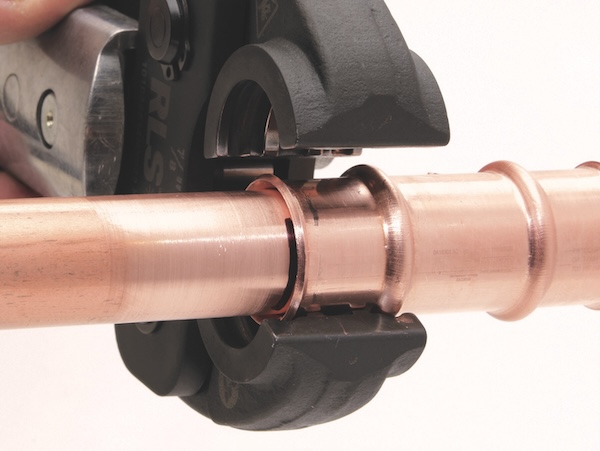

Carrier, global leader in intelligent climate and energy solutions, is addressing hunger and food waste globally by supporting food banks in the communities in which we live, work and operate. As we enter the giving season, it’s important to remember that more than 700 million people face hunger1, highlighting the urgent need for collective action Read more
Carrier, global leader in intelligent climate and energy solutions, is addressing hunger and food waste globally by supporting food banks in the communities in which we live, work and operate. As we enter the giving season, it’s important to remember that more than 700 million people face hunger1, highlighting the urgent need for collective action.
“We are deeply committed to playing an active role in the movement to end hunger and food loss and waste, knowing our efforts can contribute to a world where no one has to go to bed hungry and where resources are used responsibly,” said Edward Dryden, President, Carrier Refrigeration. “Over the years, Carrier has contributed financial support, donated refrigerated truck and trailer products, and dedicated countless employee volunteer hours to local food banks to meet the global challenge head-on and support the delivery of fresh, nutritious food to those in need.”
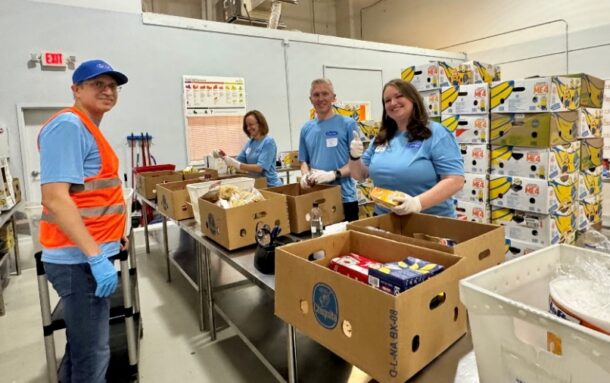
Edward Dryden, President, Carrier Refrigeration (center) and members of his leadership team volunteered by sorting and packing food at a local food bank.
Carrier provided nearly $300,000 to hunger relief organizations around the world, with an additional $60,000 donation from Carrier-affiliated dealers and distributors for use throughout 2024 to make a significant impact to the following organizations:
Feeding America
- Carrier provided $200,000 in grants to food banks affiliated with Feeding America® near Carrier facilities, spanning nine U.S. states. Feeding America is part of a nationwide network of over 200 food banks and 60,000 meal programs. With the donation, local partner food banks directed resources toward expanding their capacity for rescuing more perishable food, such as utilizing temperature-controlled storage to preserve fresh, nutritious food for people in need.
- Bryant, a Carrier Residential HVAC (RHVAC) business, celebrated its 120th anniversary with a campaign to raise awareness of food loss and waste. Carrier kicked the campaign off with a $50,000 donation to Feeding America and then RHVAC worked directly with local dealers and distributors to raise an additional $60,000. Employees and customers spent many hours volunteering at their local food banks to support the initiative. This funding supported Feeding America’s national food insecurity programs.
European Food Banks Federation (FEBA)
- Carrier donated $35,000 to the European Food Banks Federation (FEBA), a non-profit organization that supports and unites a network of over 30 national Food Banks across Europe in the fight against food insecurity and waste. Funds went toward further expanding imperative online data collection, development of a knowledge-sharing portal and facilitating skill-sharing sessions across the network to build capacity.
Beverly Bootstraps
- Carrier also donated $10,000 to Beverly Bootstraps, a food pantry with extended social services located in Massachusetts near the headquarters of Sensitech, a Carrier Refrigeration business. The organization provides immediate hunger relief and educational resources and programs to empower people to be self-sufficient.
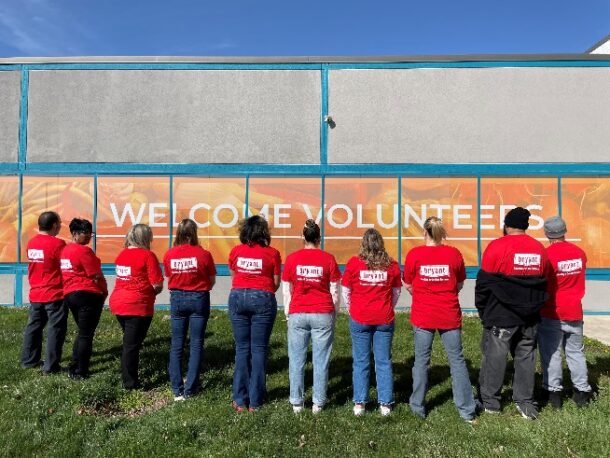
Bryant employees in Atlanta and Indianapolis volunteered at their local Feeding America affiliates.
In addition to financial contributions, Carrier employees around the world volunteered their time and talent at food banks in their local communities, helping inspect, sort and pack donated food in preparation for distribution. To learn more about Carrier’s efforts to make a positive impact in our communities around the world, visit https://www.corporate.carrier.com/corporate-responsibility/social-impact/our-communities/.
1World Health Organization
